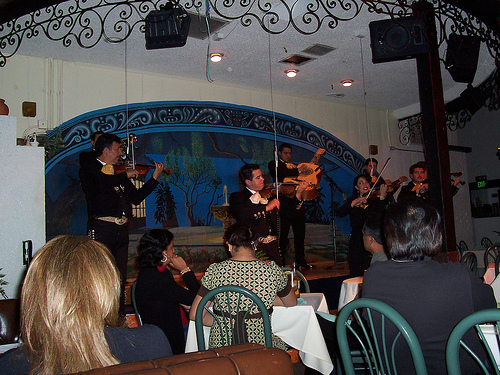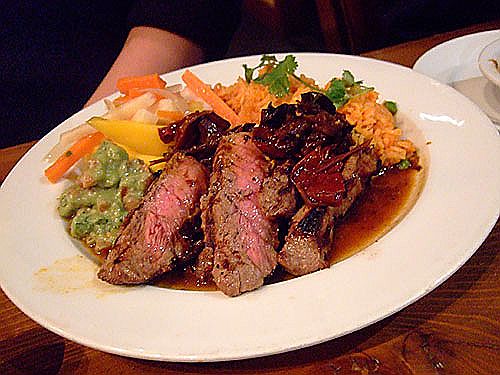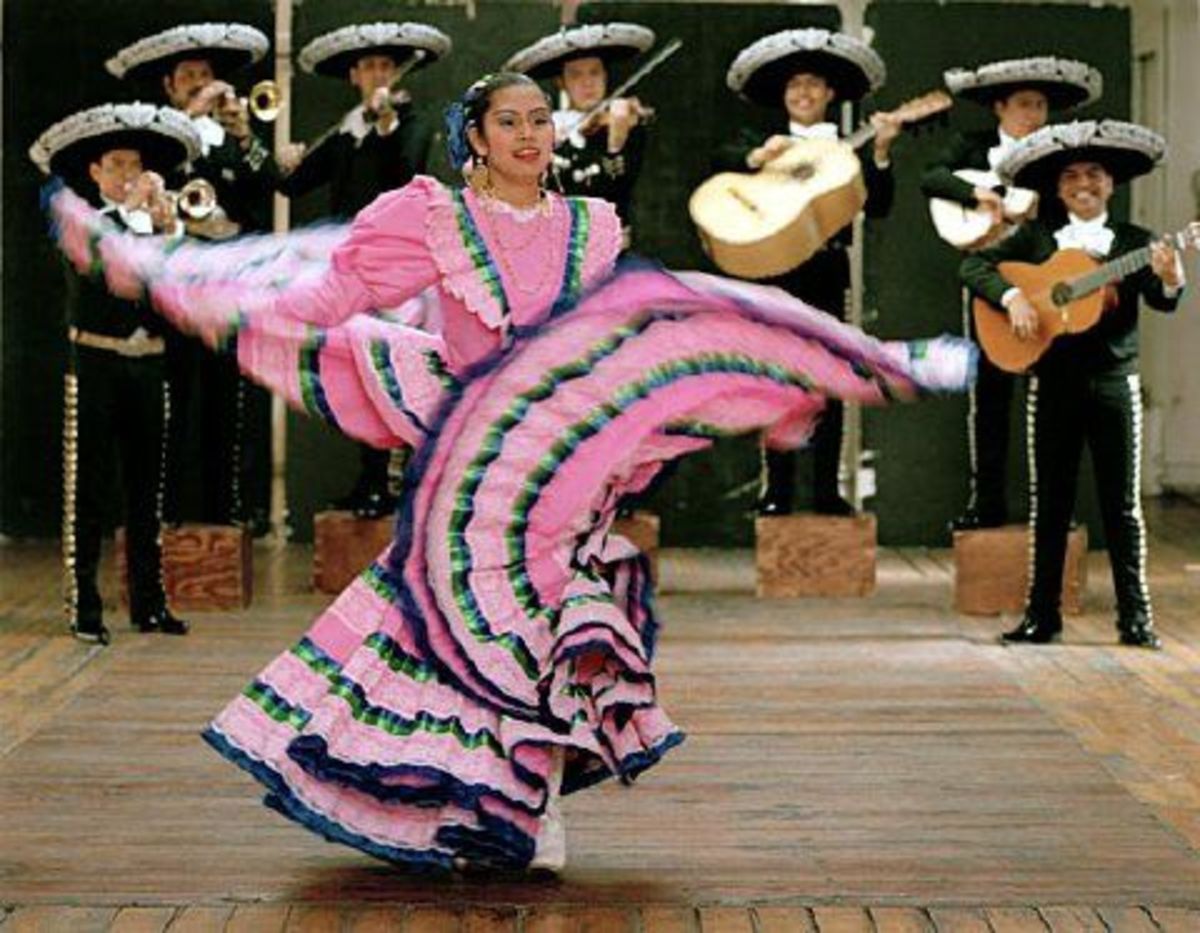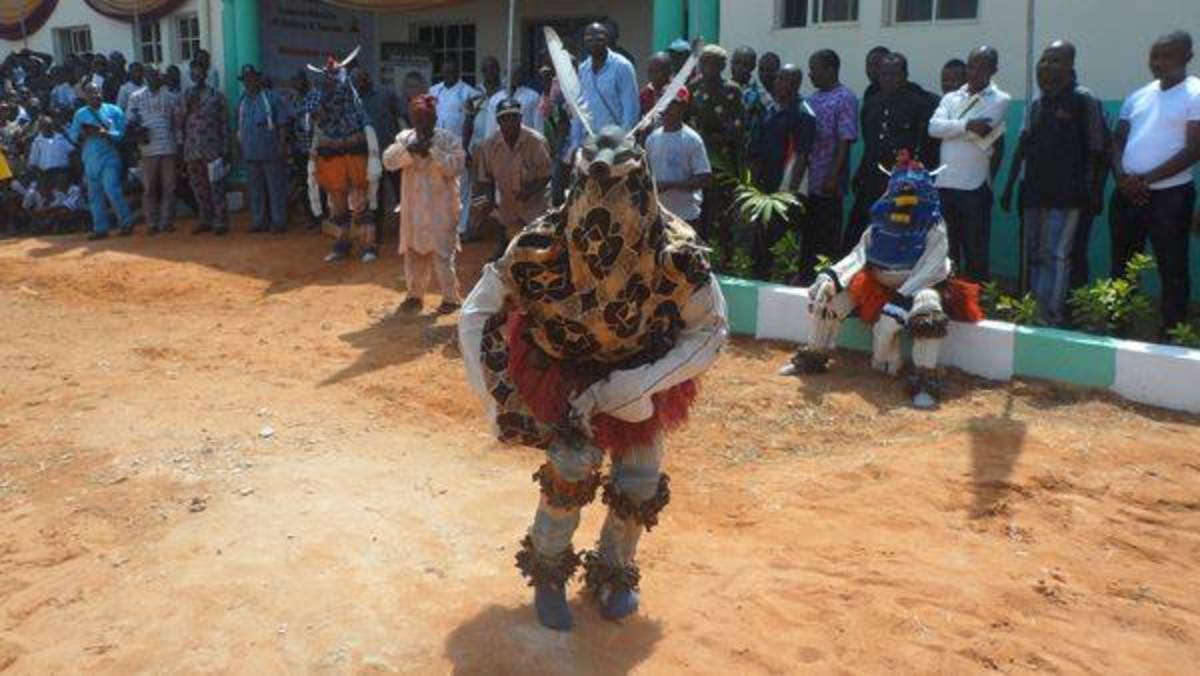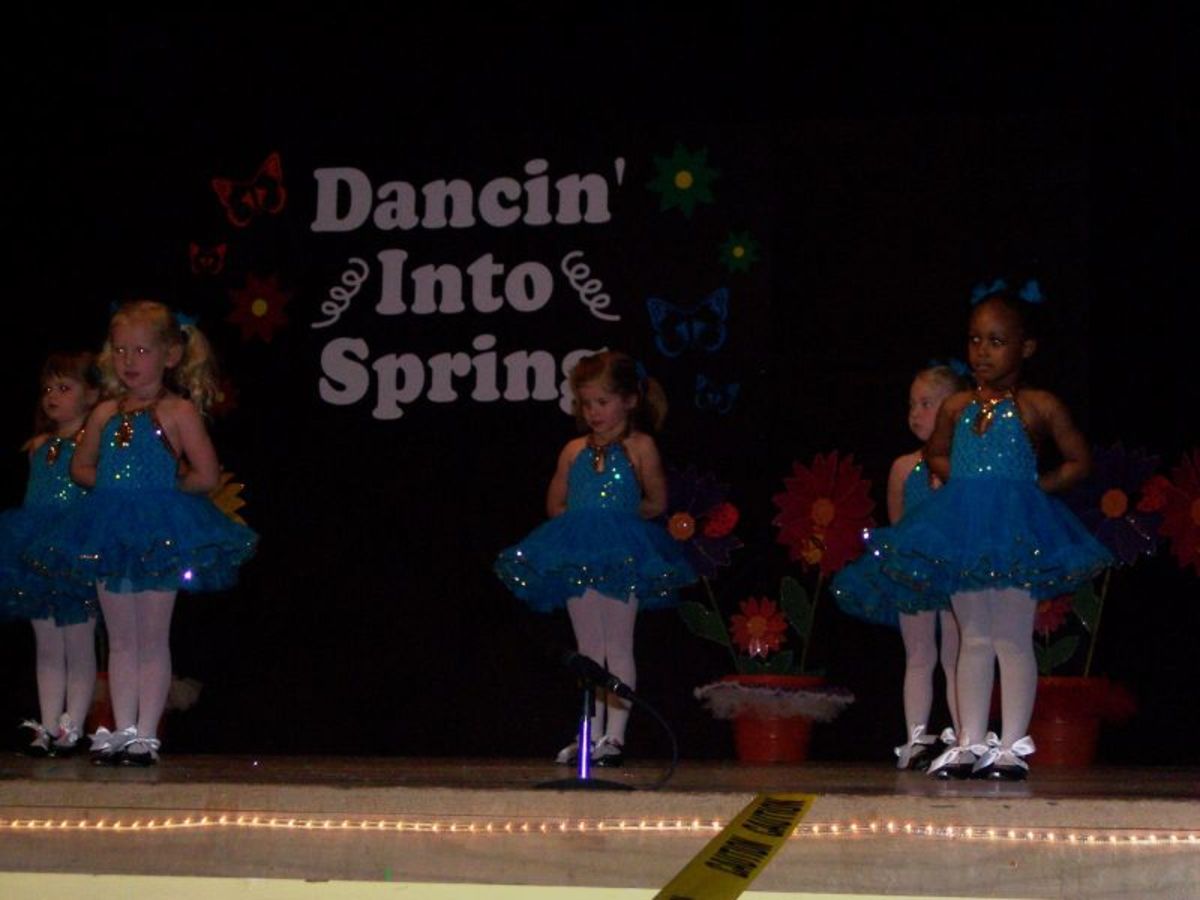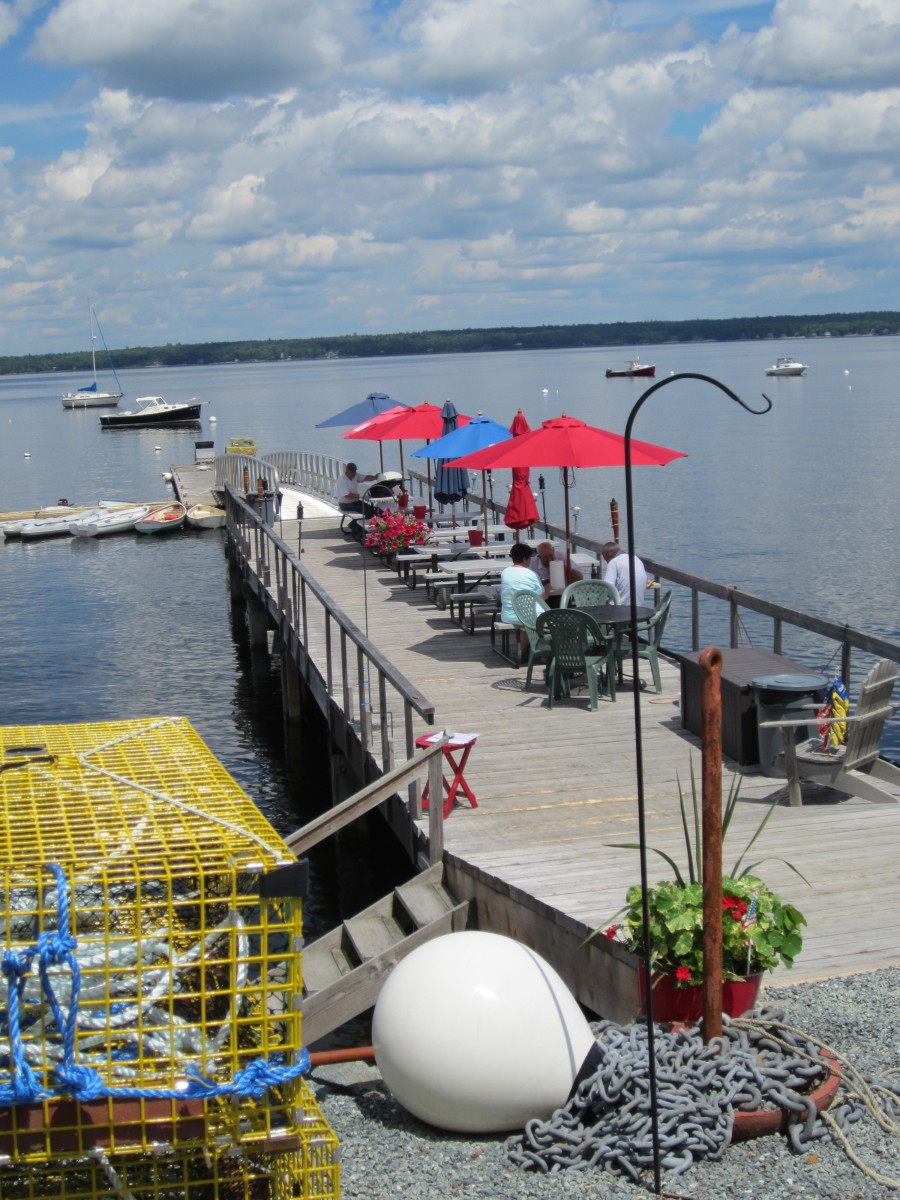Carne Asada, Mariachi: Does my cultural experience come with an e-mail confirmation?
Carne Asada and Mariachi
Does my cultural experience come with an e-mail confirmation?
Before even beginning to describe the music of La Fonda restaurant, one must describe is the food. I ordered the Carne Asada which literally means “roasted beef”. The meat (which came in large quantities at this restaurant) tasted both tender and flavorful at the same time. The seasoning used on it created an explosion of flavorful black pepper and other seasoning spices on my tongue. The dish included rice, beans, and vegetables along with the steak to make for truly delicious and, I might add, well-balanced meal. Our table also shared a bowl of salsa and a bowl of guacamole, both accompanied by an overflowing basket of chips. The whole ensemble tasted outstanding. By then end of the night I was so full, I as if I wouldn’t feel the need to eat for the next twenty-four hours. And dinner came with a show!
The restaurant itself seemed reminiscent of an old-style rural Mexican hacienda complete with orange walls, arched doorways, Spanish roof tiles, and wrought iron chandeliers. Despite the restaurant’s corny decor, the food and the music blew me away. A large stage took up most of the space in the dining room. It had a giant green overhang that covered the lights on the performers. Behind the stage, obscuring the back wall of the restaurant, hung a giant painting of what looked like a pristine urban park with pedestrians strolling between large green hedges. Even though the painting reminded me of a scene that one might see in a cleaner version of Mexico City, I could not figure out why the band had decided to use it as its background. However I forgot all about the painting when mariachis came out onstage and began to play.
My mother, who works downtown and frequents Olevra Street, said that this group sounded like the most talented she had ever heard, and I would have to say that I agree. The music reminded me of what one might hear during a salsa commercial on TV, except a little more tasteful than that. The group itself consisted of two trumpet players, three violinists, and one acoustical bass guitar player. Towards the beginning the trumpets produced a sound so loud that I felt the impulse to cover my ears when they hit an especially strong note, but eventually I got used to it.
The entire band wore matching black and white Mariachi suits. Two of the violinists joined another man as vocalists, although at times all the players joined in song. Two dancers, who would come on stage every few songs, also accompanied the musicians. The female dancer, always clad in a ridiculously colorful outfit, and the man, in an equally ridiculous white suit and cowboy boots, would perform traditional Mexican dances such as the The Zapateado La Bamba dance and the Mexican hat dance. In the Zapateado La Bamba, the two dancers stomped on the stage and danced around each other, all the while tying a bow with a piece of fabric left on the stage at the beginning of the dance. When the dance finished, the dancers held up the finished knot for the audience to see. The audience, upon seeing the completed bow, erupted into applause. I might take this moment to describe the audience; they seemed intensely enthusiastic about the band’s music, and I could see why. The musicians were extremely talented and produced an almost painfully loud but extraordinarily joyful harmony The audience was populated by a variety of groups including several families, a few birthday parties, and even a few college students who said they studied music theory at CSUN. Everyone seemed to be enjoying themselves, maybe even a little too much judging by the raucous laughter issuing from one of the tall tables closest to the bar.
However, to really understand the appeal of Mariachi music you must know its history. Marachi music started out as a kind of music that Native Mexicans played with rattles, drums, reed and clay flutes at special occasions like weddings. Later, once the Europeans had arrived in South America, these crude instruments were replaced by violins, guitars, harps, brass horns, and woodwinds brought over by the Spanish during the mid 16th century (mariachi.org). The Native Mexicans even adapted a few instruments of their own to better suit the demands of mariachi music (such as the acoustic bass guitar, or guitarró). No one really knows exact meaning of the word Mariachi for certain, but most etymologists believe that it comes from the name of the wood that the Native Mexicans used to make instruments. The average Mariachi band usually consists of six to eight violins, two trumpets and a guitar. As Sylvia Gonzalez wrote in her book, Mexico, The Meeting of Two Cultures,
…Mariachi [uses] sharply contrasting sounds: the sweet sounds of the violins against the brilliance of the trumpets, and the deep sound of the guitarró against the crisp, high voice of the vihuela; and the frequent shifting between syncopation and on-beat rhythm. The resulting sound is the heart and soul of Mexico. (Gonzalez 95)
The modern strain of Macrichi music, which can be heard on Olvera Street today, has its roots in the Mexican state of Jalisco, the place where the guitarró replaced the harp as the string instrument of the Mariachi band. Although some Mariachi bands such as the famous Mariachi Vargas de Tecalitlan, (which just celebrated its 112th anniversary), still use the harp as a testament to a more traditional style, for the most part it had been replaced by the guitar in modern Mariachi music.
Dance has always accompanied Mariachi music since its creation. The most common kind of dancing to accompany Mariachi is the zapateado, in which dancers literally pound the heels of their shoes against the dance floor. After watching many YouTube videos of the dance and after seeing it performed in both Los Angeles and Mexico, I can testify that this form of dance can reduce even the most study wooden stages to a broken pile of boards. During the zapateado, the dancers synchronize their stomps with the rhythm of the music. Many of the traditional Mexican dances that accompany Mariachi music usually try to show the audience the dancers’ balance and muscular control such as the previously described La Bamba Zapateado dance or the huapango where dancers must balance glasses of water on their heads and keep their torsos perfectly erect to keep the water from spilling out.
La Fonda’s longevity mimics the longevity of Mariachi music. La Fonda opened its doors in 1969 as La Fonda de Los Camperos. The owner, Natividad “Nati” Cano, wanted a place for his Mariachi band, Los Camperos, to play. La Fonda’s website and propaganda brags that La Fonda combines live Mariachi music with a “complete dining experience” in way that isn’t replicated anywhere else in the country. However, in 2007 La Fonda closed indefinitely only to be bought by one of the building owners, Manuel Meza, and reopened in 2008. The website, which includes sophisticated video/audio elements that one might find on the website of a high-end hotel, proclaims that Mr. Menza and his team “worked diligently to give La Fonda on Wilshire a fresh new look, while preserving some of the elements the regulars will recognize and continue to appreciate.” Hmm. Somehow I feel cheated, like that I missed out on all the real nitty gritty cultural experience of the former La Fonda de Los Camperos sans fancy website, English speaking waiters, and online reservation system. I will admit that I had my suspicions about what kind of traditional cultural experience I would get at a place that’ll send you and email confirmation and that requires a certain minimum charge per person. The appearance of a pretty red-haired woman with a thick Russian accent at our table thoroughly surprised me, especially when she said that as part of “a free service the restaurant provides” she could take a picture of our party and then give it to us printed out after the show. Low and behold, on our way out we received two full sized color photos of the family (and in one photo Emily Yslas, who accompanied us) posing at the table and another free advertising postcard with our picture included in it. I mean really, how much more commercial can you get? The whole experience felt like the end of a roller coaster at a theme park.
Initially I had wanted to go take the new gold line to the Mariachi plaza in East L.A., to listen to some real local mariachi bands that made their money with an open suitcase or an overturned sombrero, then stop by a local vendor for a squash blossom tortilla and a sheep meat taco, all for under $5. Oh how very Crossroads of me. Then reality set it: my mom didn’t think that the Mariachis played on Sunday (they aren’t Jewish you know, she added), I also couldn’t figure out how to get downtown, and did I really want to hang around a neighborhood that bordered one of the most dangerous parts of the city? This internal struggle raged inside my mind between the need to feel artsy, spontaneous, and get that great feeling that Westside people get when they think they experience real culture, versus the need for security, safety, and the comfort of the familiar situation. In the end, the fact that I was guaranteed to get a show at La Fonda won out and I made the compromise that would have made some of my artier classmates at Crossroads tear up a plaid flannel shirt.
All aspects considered, I’ve decided that I did get a cultural experience by going to La Fonda even if it became slightly watered down by gourmet food and the online reservations. Why I felt that I still did get a cultural experience may be attributed to the new owner’s effort to preserve the original restaurant, maybe even to the fact that a lot of the audience spoke Spanish, but most importantly I think I was affected by the overwhelming, mesmerizing power of the Mariachi music and its ability to convey as Sylvia Gonzalez said, “The heart and soul of Mexico.”
Works Cited
Gonzalez, Sylvia. Puro Mariachi. New York, NY: Higgins and Associates, 1991. Puro Mariachi. Web. 9 Dec. 2009. <http://www.mariachi.org/history.html>.
"History of La Fonda." La Fonda on Wilshire. Web. 10 Dec. 2009. <http://www.lafondala.com/sub/history.jsp>.
La Bamba/El Zapateado. YouTube. 22 Apr. 2008. Web. 9 Dec. 2009. <http://www.youtube.com/watch?v=_kkm6A_SBZw>.
Martinez-Avila, Cecilia. "A new generation embraces centuries-old music of Mexico : Mexico Culture & Arts." Access Mexico Connect - The Electronic Magazine all about Mexico. 1 Jan. 1997. Web. 10 Dec. 2009. <http://www.mexconnect.com/articles/1872-a-new-generation-embraces-centuries-old-music-of-mexico>.
"Mexican Folklore." Angelfire website hosting. Web. 10 Dec. 2009. <http://www.angelfire.com/ma3/mexicodances/>.
